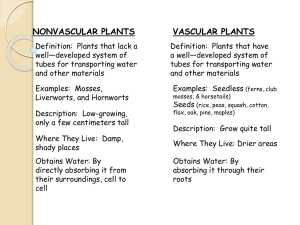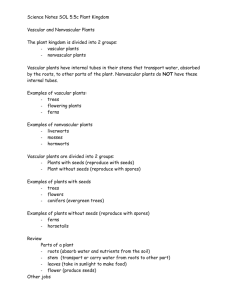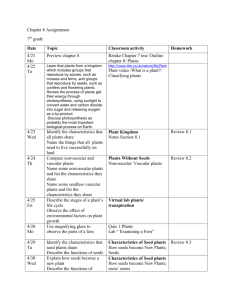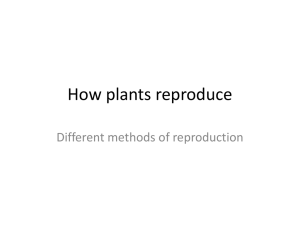How do plants reproduce?
advertisement
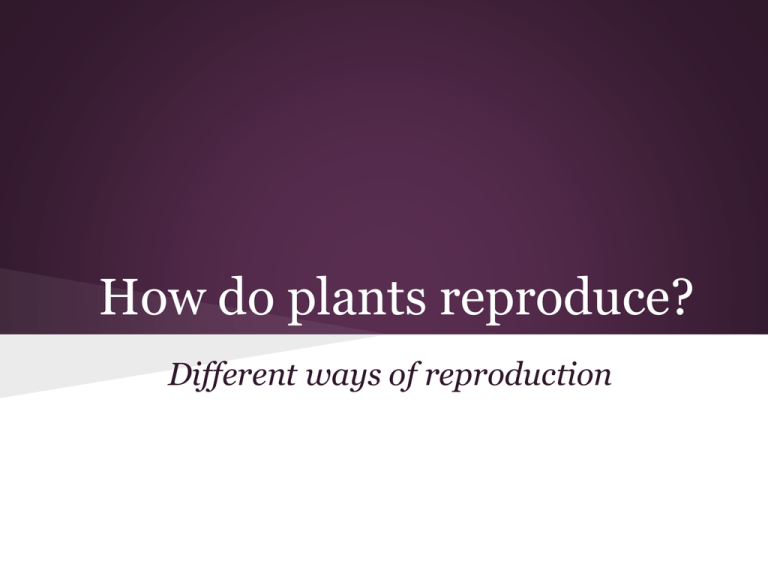
How do plants reproduce? Different ways of reproduction Nonvascular Plants Nonvascular plants don't have xylem and phloem. Nonvascular plants move water, nutrients and food from one cell to another. This is why nonvascular plants do not grow very tall. Nonvascular plants do not have flowers, so they can't reproduce with seeds. Instead they reproduce with spores. Def: Spores--a singular reproductive cell that Simple Vascular Plants This type of plant includes ferns, and there are more than 11,000 kinds of ferns. They reproduce with spores, just like nonvascular plants. Like mosses, ferns produce both male and female cells that unite and make a zygote. Cone-bearing Vascular Plants Most vascular plants reproduce with seeds. One type produces seeds with no protection around them. The other type produces seeds protected by some kind of fleshy, sugary fruit. Plants with unprotected seeds are called gymnosperms. The most common type of gymnosperm are the conifers or pine trees. Most conifers produce both male and female Flowering Vascular Plants Most of the plants you are familiar with are flowering plants or angiosperms. There are more than 235,000 kinds of angiosperms on Earth. These include grasses, herbs, shrubs, and many trees. Flowers are important to the success of the plant reproducing. They make sure that pollen gets from one part of the flower to the other part. (male to female). flowering vascular plants continued Angiosperms must be pollinated by insects and other small animals. (birds, humans, dogs, etc.) The color, shapes, odors of the plants and fruits attract these animals, who then carry the pollen and seeds to other areas. Angiosperms produce fruits that protect the seeds. These include apples, tomatoes, peanuts, acorns. A fruits serves as a protective covering that The fleshy covering protects the seeds from predators like deer. The deer may eventually eat the seeds inside the fruit, but they may still survive. The fleshy covering protects and offers food for the seeds when they need it later. Seed Dispersal Once the eggs/seeds of a plant have been fertilized and the fruits have formed, the plant is ready to release the seeds. If the fruit falls right next to the parent plant, the chances of it growing to maturity are low. But plants are adapted to disperse, or scatter, the fruits and seeds to places far away from the parent plant. Maple trees disperse their seeds with wingshaped spinners. continued Some seeds require animals to help move them. Squirrels will bury acorns and forget about them. A oak tree may then sprout from the acorn and grow. Other seeds require the animal to eat the seed first and be "dropped" at a different site. Some seeds are covered by a bur, which sticks to animal hides (and our pants) and then is dropped at another location.
